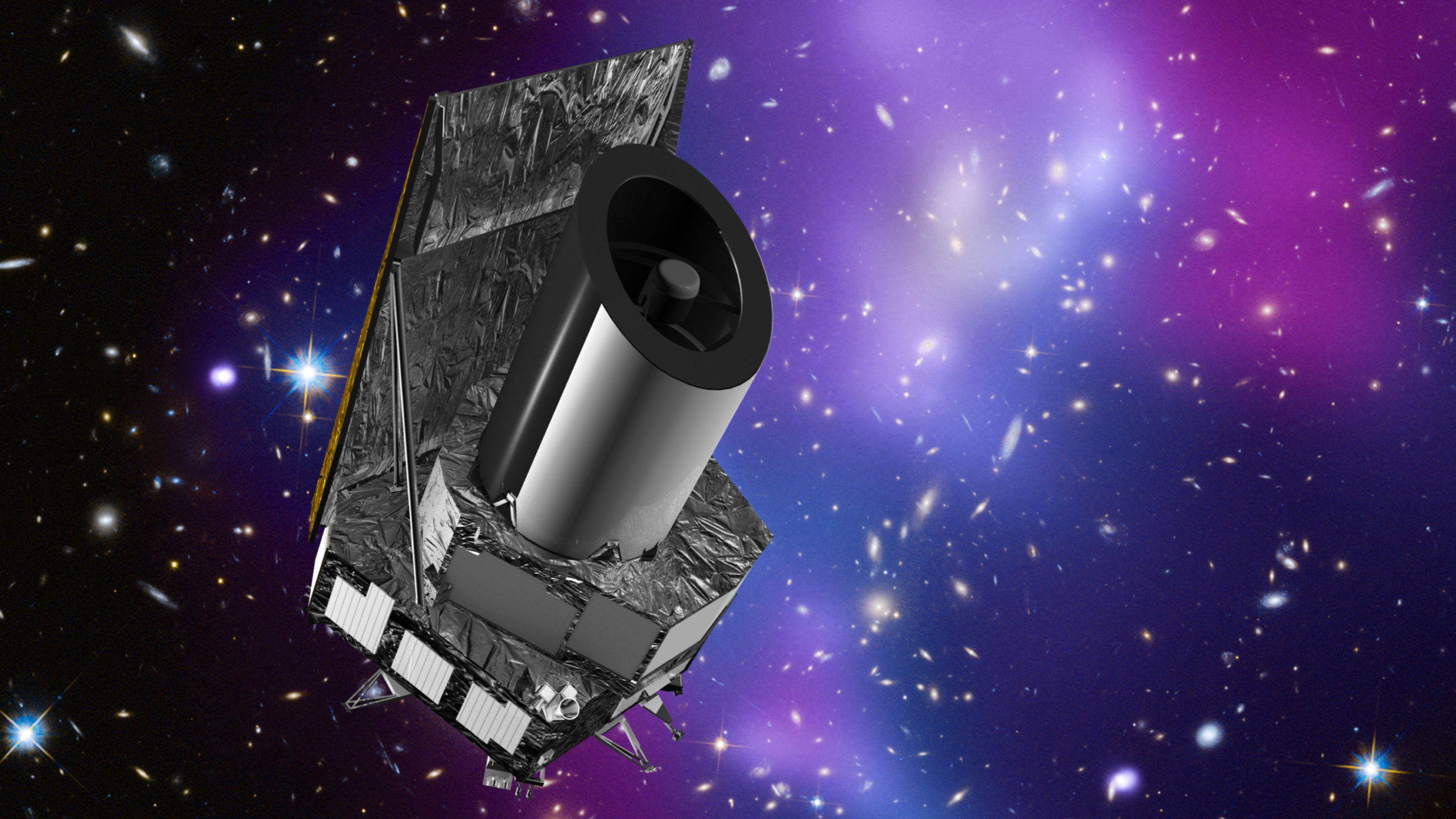by Deborah Busonero, Ronald Drimmel, Sebastiano Ligori, Alessandro Spagna
Euclid is a class M mission of the European Space Agency (ESA) with a contribution from NASA that is comprised of a space telescope to be launched on July 1 st from Cape Canaveral in Florida on a SpaceX Falcon 9 rocket. The primary objective of this mission, planned to have a 6 year duration, is to make deep observations of about one third of the sky in an investigation of the nature of dark matter and dark energy in the Universe.
The telescope and the service module of Euclid was built over the last 10 years by a collaboration of 140 European companies guided by Thales Alenia Space. Two scientific instruments, the VIS (Visual Imager) and NISP (Near Infrared Spectrometer and Photometer) were built by an international consortium of research institutes (Euclid Consortium) involving 3500 scientists and engineers in 30 European countries.
Within this consortium Italy makes up the second largest contribution through the participation of the Istituto Nazionale di Astrofisica (INAF) and the Istituto Nazionale di Fisica Nucleare (INFN), both financed by the Agenzia Spaziale Italiana (ASI).
Some of the researchers from the Astrophysical Observatory of Turin (OATo) have participated in Euclid since its conception. L. Corcione and S. Ligori are among the coauthors of the mission’s “Red Book”, that is, of ESA’s initial mission definition study.
These same researchers are also part of the System Team of the infrared spectrometer NISP, participating in the definition of requirements for the “warm” electronics of the instrument.
Currently S. Ligori is responsible for the Work Package dedicated to the onboard software of the Instrument Control Unit (ICU), whose realization was made possible also thanks to the work of V. Capobianco e D. Bonino. After launch the same team will provide support for NISP operations during the mission.
Other staff members of OATo have also supported the building of Euclid’s service module, under the responsibility of Thales-Alenia Spazio Italia (TASI), providing the input catalogue of over 500 million stars that will be used by the Fine Guide Sensor (FSG), critical for controlling the orientation of the telescope during its observations. The initial feasibility study was lead by M.G. Lattanzi, while the construction of the catalogue was lead by R. Drimmel, with the collaboration of B. Bucciarelli, R. Morbidelli, S. Perina, R. Re Fiorentin, M. Sarasso, R. Smart, A. Spagna.
Finally, since 2020 the OATo researchers D. Busonero and M. Gai have been contributing to the Science Ground Segment of Euclid concerning the activities of the Italian Science Data Center, located in Turin, with regards to the validation and tests of the Near Infrared Organizational Unit (OU-NIR) that is dedicated to the analysis of the images that will be produced by NISP, as well as aspects of the calibration of the Point Spread Function (PSF) to be carried out by the OU-NIR and the Instrument Operation Team (IOT).
See also:
- 1° July 2023, h 16:15: INAF-OATs, SISSA and UniTS researchers will comment on the live broadcast of the Euclid satellite launch. Live streaming on YouTube from the Trieste Astronomical Observatory.
- 1° July 2023, h 16:30: Euclid launch live from Cape Canaveral in Florida. ESA Youtube livestream.
- 1° July 2023, h 17:00: follow the launch of Euclid from ASI with the participation of Teodoro Valente (ASI), Giovanna Giardino (ESA), Marco Tavani (INAF) and Olivero Cremonesi (INFN), ASI TV.
- Thursday 13 July 2023, h 18:00: Turin on board of the Euclid space mission. Conference at the Central Civic Library (Turin). In this meeting, four researchers from Thales Alenia Space, the Astrophysical Observatory and the University of Turin will talk about Euclid, highlighting the fundamental contribution in science and technology from our city.

